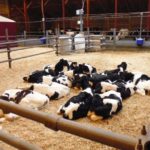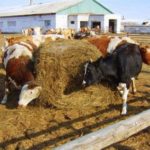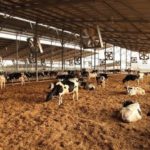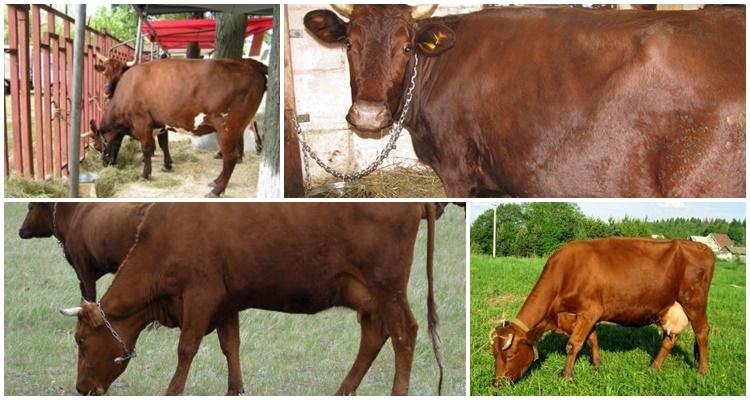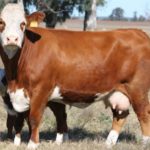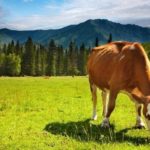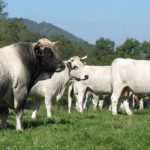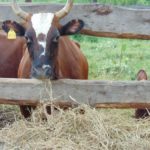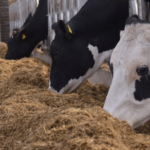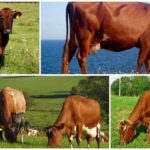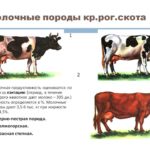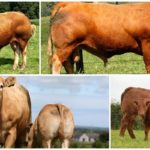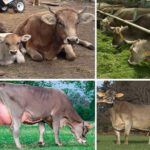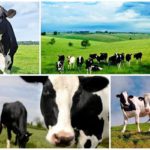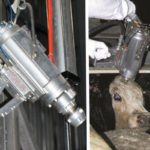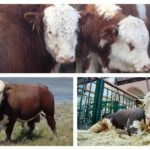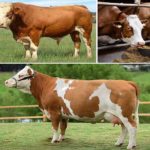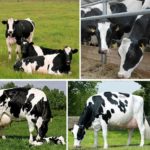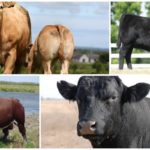The way animals are kept affects their productivity. More and more farmers have begun to switch cattle to the free-stall method of keeping cows. He performed well in Western Europe and the USA. However, before switching to loose housing, they carefully study the methodology, determine the positive and negative aspects. The farmer should first prepare the room in which the animals will be kept.
The essence of the method
Free-stall keeping of cattle implies free movement around the barn and the area for walking. The cow is constantly on the move, which has a positive effect on her health. If you analyze the method from the point of view of benefits, it will give good results. Cows will feel safe, and active pastime will increase comfort. This will have a positive impact on the production of dairy products and the quality of meat.
Box housing has the opposite effect on the animal. He will no longer need to move, since the feeder is located 2 meters away. Combibox content differs in that the room is divided into sections, but at the same time space is saved in the room.
Advantages and disadvantages
The loose-stall method of keeping animals is an ideal option for farms with a herd size of more than 400 animals. It is not possible to pay attention to every animal, so this technique will allow the animal to feel as comfortable as possible. These cows are not suitable and not adapted for living indoors separately from the rest of the herd.
When are cows transferred to this method?
The transfer of cattle to loose housing is carried out to achieve the following objectives:
- increasing comfort for the animal;
- establishment of a regime of adequate nutrition and development;
- the use of special tables instead of standard feeders, which will speed up feeding;
- dividing cows into physiological groups, which will allow you to care for them and adhere to the veterinarian’s recommendations more effectively.
The free-range method is recommended for use in large herds (more than 400 animals). This will create ideal living conditions and reduce the likelihood of stressful situations for animals.
How to switch to free content
This is recommended if there is a sufficient amount of feed and good bedding. Animals with this technique move more, therefore they need nutritious food high in proteins and mineral salts.
Before transferring cows to new methods of housing, full veterinary control is carried out. Hoof cleaning and preventive examination for infectious diseases are carried out. It is also important to remove the horns to avoid possible injury to the cows. This can be done by chemical, physical or thermal methods.
Free-stall housing is suitable for animals of medium size.If the cow is thin or overly large, it is recommended to keep her separately in a stall. Such individuals are not suitable for free keeping. There are 2 subspecies of free-stall housing: the box-living option and the deep-litter option.
Features for milking
The cows are milked in a separate room. It is designed so that cows enter the section through a separate entrance, without mixing with animals that farmers have not yet milked. Experts recommend allowing no more than 3.5 hours for milking a herd. To meet this period of time, individual machines or group stationary installations are used. It all depends on the size of the room and the number of heads in the herd.
It has been scientifically proven that a cow's milk yield directly depends on the animal's sense of comfort. To prevent productivity from decreasing, it is recommended to divide the herd into several groups, which will be brought into the milking room. You cannot move animals between groups; they need to get used to each other's presence.
Dividing the herd
Experts recommend switching animals that are accustomed to this method to free-stall housing. Therefore, the herd should be divided into several separate groups. This will optimize production processes.
The herd is divided into pregnant dry cows, individuals with high productivity, and cows with low productivity. It is recommended to keep dry and deep-walled groups on a leash, as they are not suitable for free-living. The rest of the groups are given a separate section with a feeding area and a drinking bowl.
Area standards
When arranging stalls, they are guided by the rule in which the animal is allocated optimal space. To do this, measure the cow and add 15-20 cm to the result. With free housing, experts recommend setting the area norm at 4-5 square meters. If the cow is positioned, she will need more space.
Feeding
Animals need especially nutritious food. The specific diet is compiled depending on the division of the herd into separate groups. Taking into account the physiological characteristics of the livestock and the recommendations of the veterinarian, the farmer draws up an optimal menu, which should be balanced. This will allow the animal to receive the maximum amount of nutrients and make it more productive.
To create comfortable conditions for cattle, it is recommended to provide free access to clean drinking water.
Milking and insemination workshops
In order to assess the productivity of cows and develop an effective culling and ranking method, a farm must set up a separate insemination and milking workshop. Each animal will spend several months in this room.
In a dairy shop, animals are grouped depending on productivity. As practice shows, it is usually enough to create 3-4 groups.
Insemination is carried out both artificially and naturally. The latter option is used if the herd size is small, or the farmer has specially trained personnel to monitor the process. Most often, an artificial technique is used, as this guarantees an almost 100 percent result.
Manure removal
Cleanliness is the key to animal health and a prerequisite for the comfort of keeping.Bedding must be cleaned daily to keep the flock in optimal conditions. To optimize the process, it is recommended to remove manure while feeding the animals. To simplify the cleaning procedure, the floors in the room should have a slight slope. This will significantly speed up manure removal without creating discomfort for the animals.

